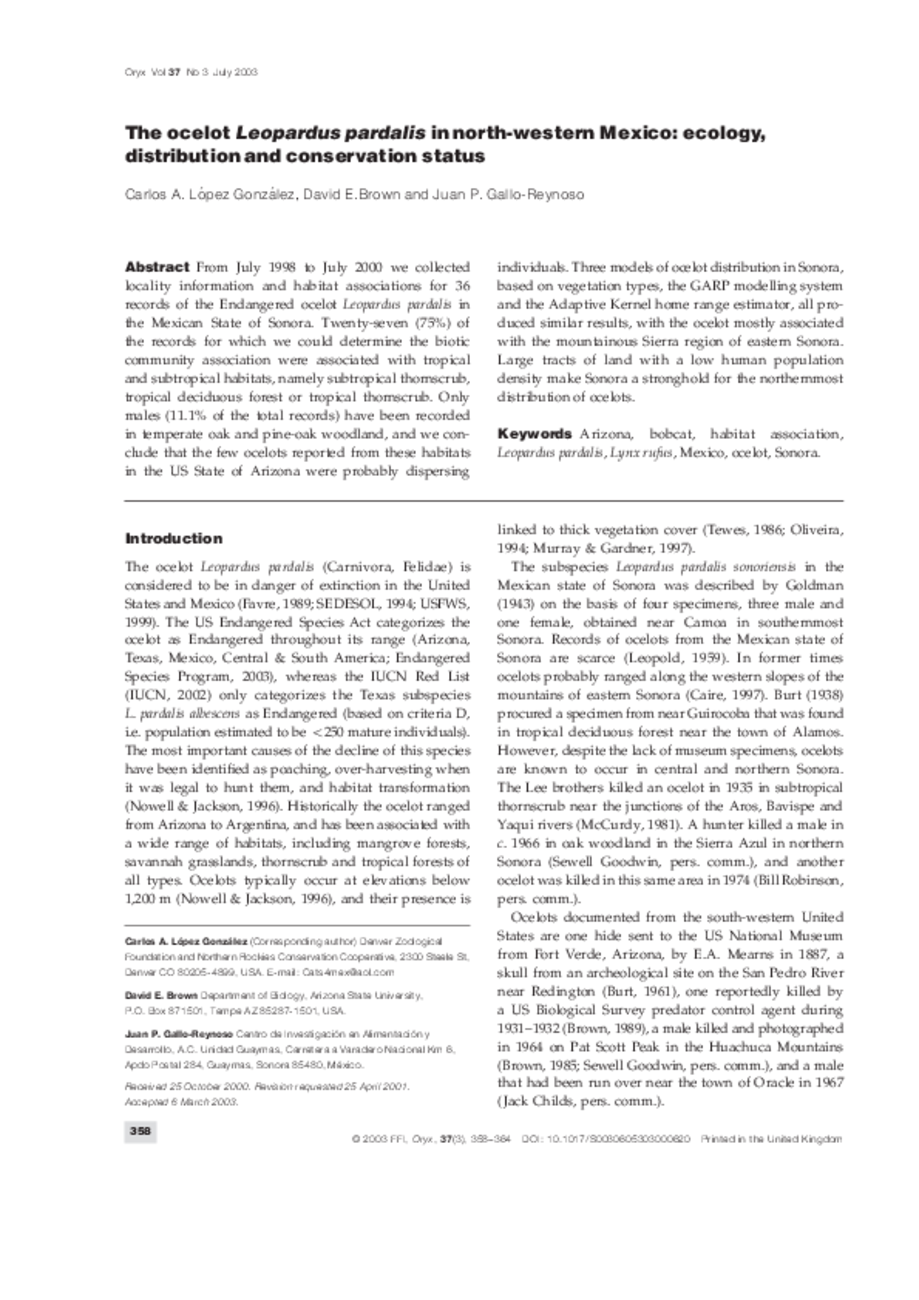The ocelot Leopardus pardalis in north-western Mexico: ecology, distribution and conservation status
From July 1998 to July 2000 we collected locality information and habitat associations for 36 records of the Endangered ocelot Leopardus pardalis in the Mexican State of Sonora. Twenty-seven (75%) of the records for which we could determine the biotic community association were associated with tropical and subtropical habitats, namely subtropical thornscrub, tropical deciduous forest or tropical thornscrub. Only males (11.1% of the total records) have been recorded in temperate oak and pine-oak woodland, and we con- clude that the few ocelots reported from these habitats in the US State of Arizona were probably dispersing individuals. Three models of ocelot distribution in Sonora, based on vegetation types, the GARP modelling system and the Adaptive Kernel home range estimator, all produced similar results, with the ocelot mostly associated with the mountainous Sierra region of eastern Sonora. Large tracts of land with a low human population density make Sonora a stronghold for the northernmost distribution of ocelots.

